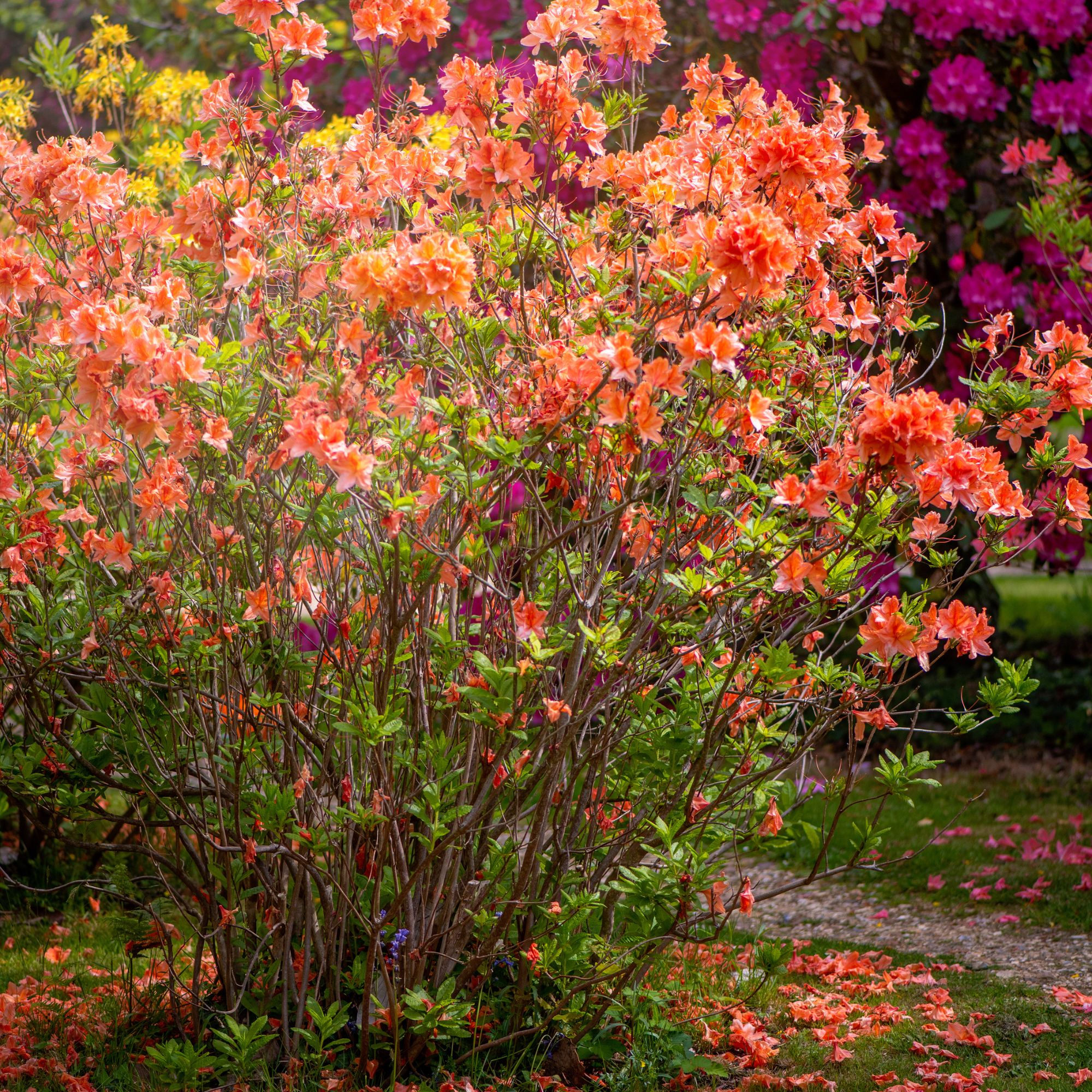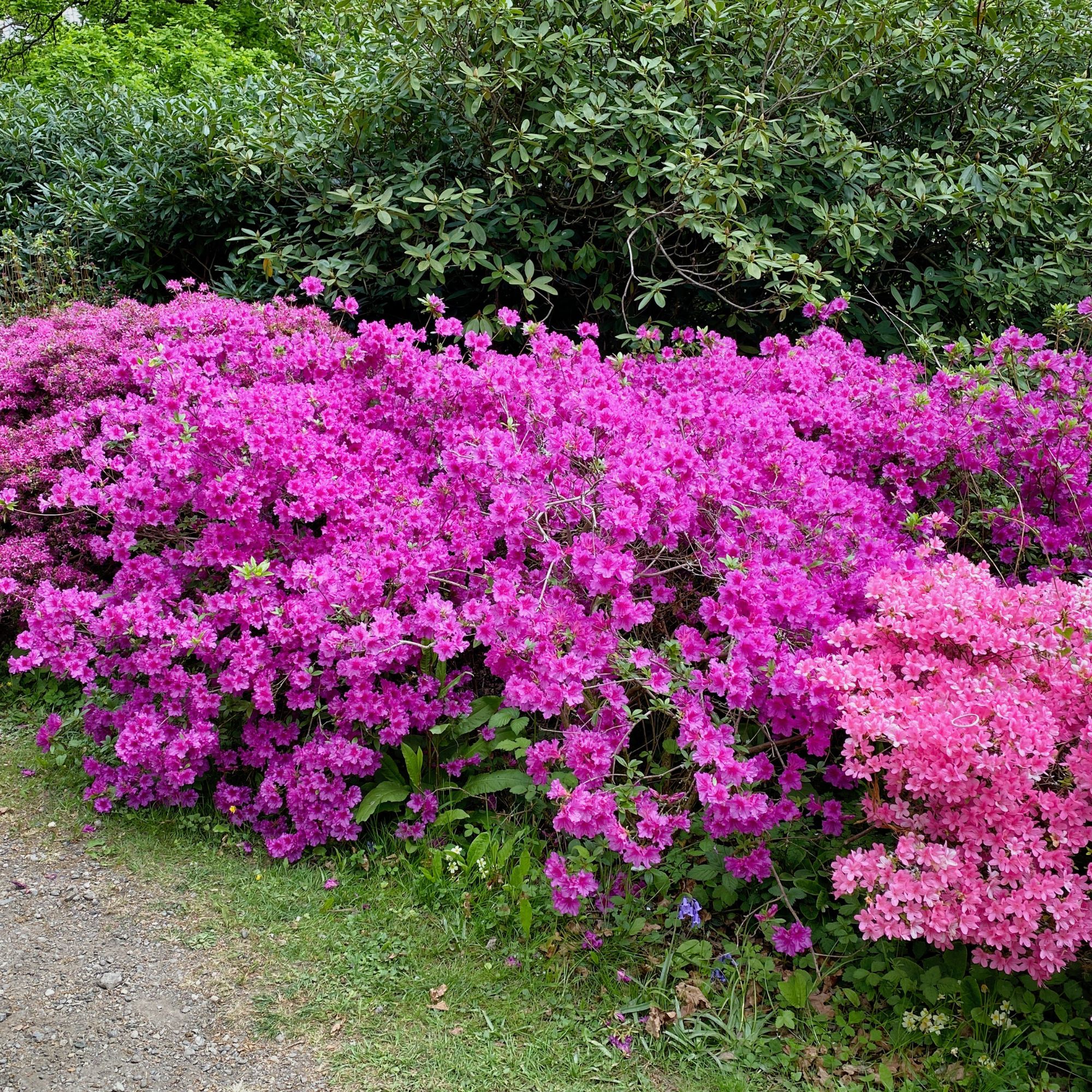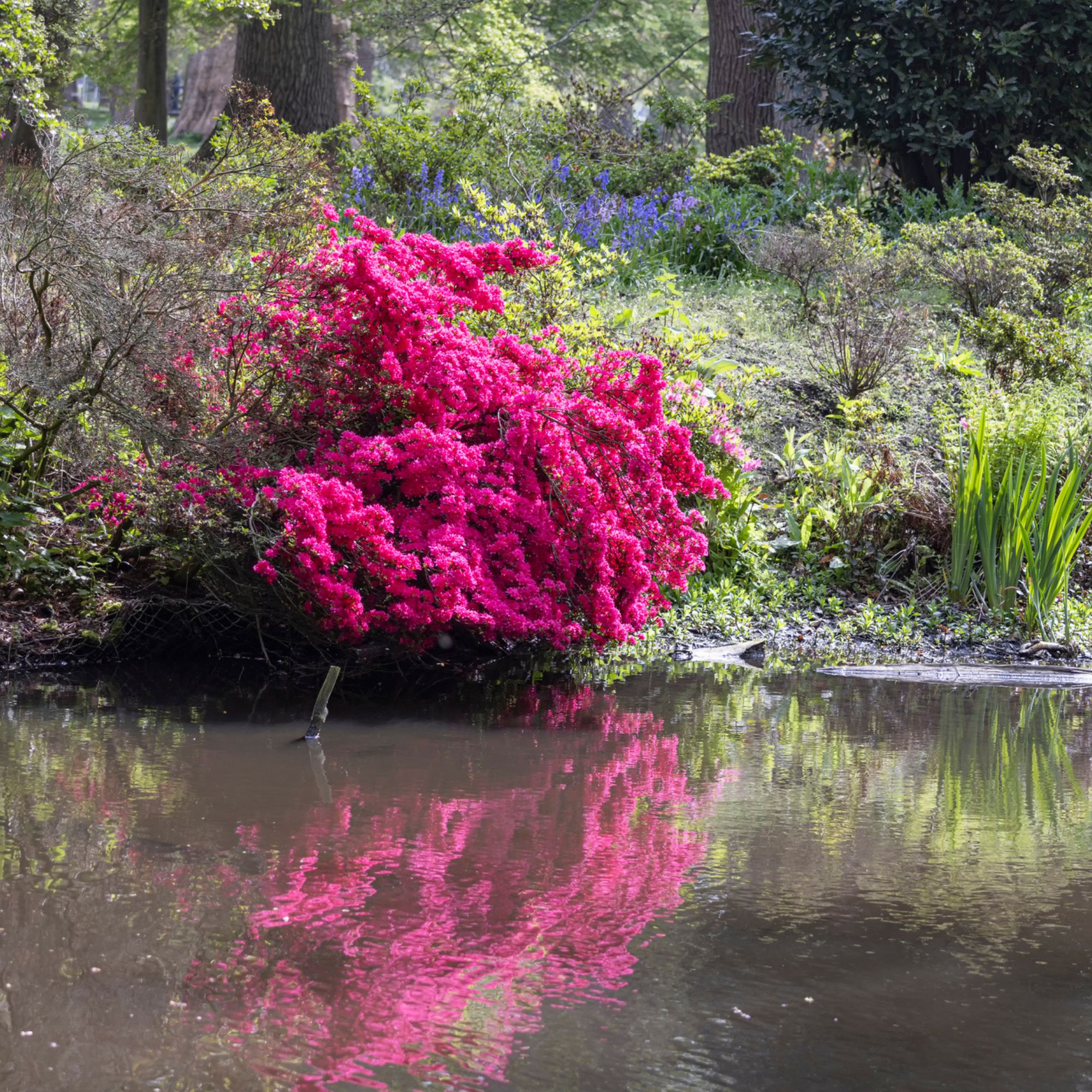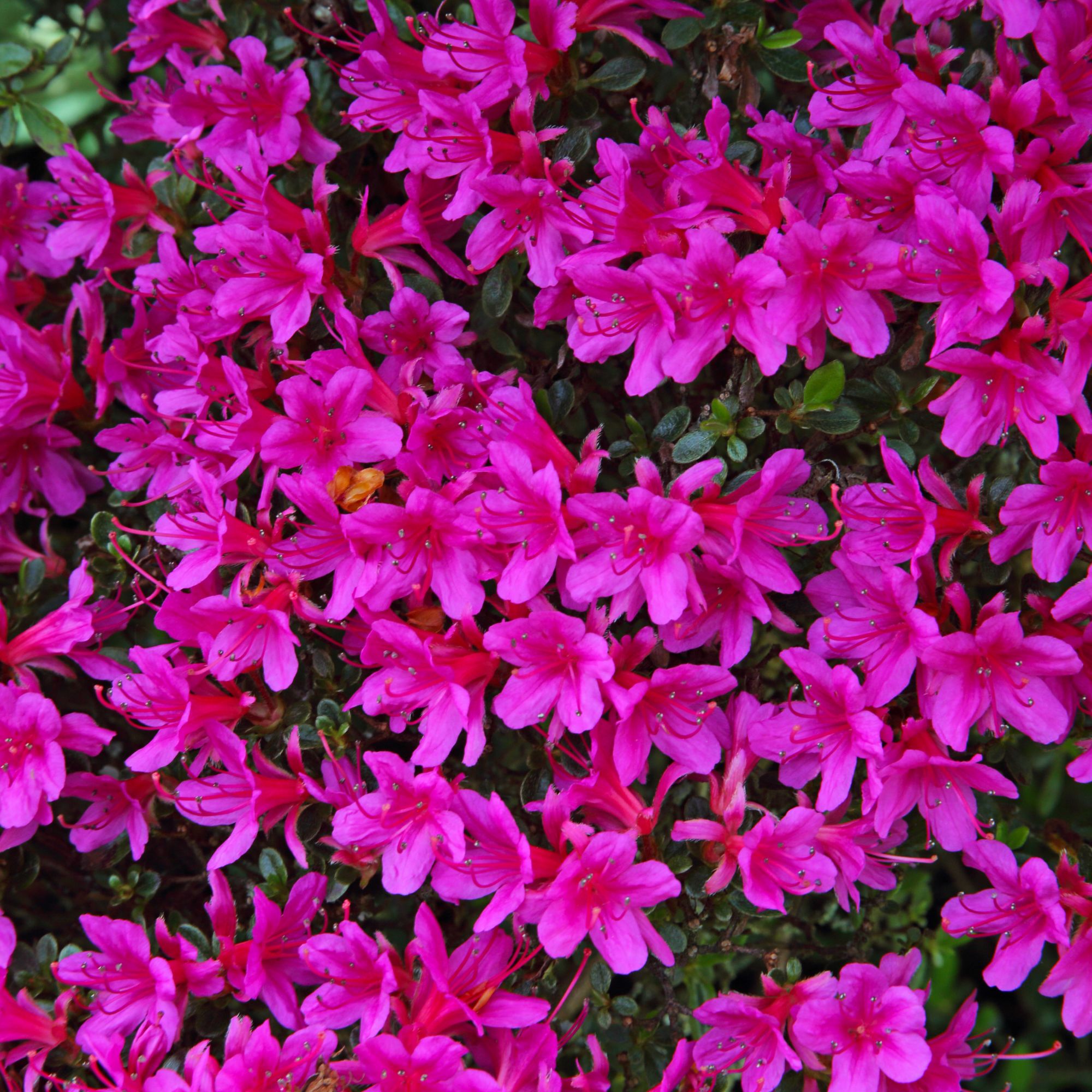
It's little wonder hobbyist gardeners everywhere are keen to learn how to grow azalea, with its bright blooms and newfound status as the shrub of the year.
That's right: azalea has fast become one of the most-searched flowering shrubs on Pinterest, with people doing everything and anything they can to fill their world with its unabashedly 'beautiful flowers'.
Throw in the fact that, as an evergreen shrub, it's one of those plants that increase property value, and you have an abundance of reasons to try growing your very own azalea at home.
How to grow azalea
If learning how to grow azalea is at the top of your list of must-try garden trends, you're not alone: it's fast becoming a garden must-have for people everywhere.

'Azaleas are the most searched flowering shrub by our customers, and particular varieties have seen some huge sale increases,' says Craig Wilson, co-founder, director, and in-house gardening expert at Gardeners Dream.
'Purple Azaleas have seen a 400% increase in sales compared to the same time last year, whilst Orange Azaleas are up 100%.'
It seems there truly is an azalea to suit everyone, as Craig goes on to explain that it's not just the ground shrub variety that's having its moment in the spotlight.
'Red Azalea Japonica Patio Trees have seen a 300% increase, and, like the shrub, the patio trees are evergreen, giving your garden a pop of colour all year round, with blooms coming in by mid to late spring,' he says.
'They're also one of the best trees for small gardens or balconies, adding colour and interest without compromising to much on space!'
What you will need
To make all of your azalea dreams a reality, you will need:
- A dreamy azalea of your choice (we're very taken by the bright blooms of the Azalea Geisha Orange from Thompson & Morgan)
- An ericaceous compost, such as the Westland 11400006 Ericaceous Compost from Amazon
- Organic matter, such as well-rotted pine bark
- A good quality fertiliser, such as Miracle Gro Premium Azalea, Camellia and Rhododendron Continuous Release Plant Food
Step-by-step
'Azalea plants come in a vibrant array of colours, from rich reds to striking purple blooms, making them perfect for those who want to brighten up their garden or indoor space,' says Craig.
'Learning how to grow azaleas results in a delightful addition to your garden, offering spectacular flowering displays from spring to early summer,' agrees Sean Lade, director of Easy Garden Irrigation.
Here, then, are some expert tips for successful cultivation in the UK:
1. Time it right
Every gardener, however green, knows that timing is everything when it comes to planting – and the same is true of the vibrant azalea.
'The best time to plant Azalea is early springtime, as the warmer months of the year tend to be when azaleas bloom and look their best,' says Craig.

Sean agrees, adding that, here in the UK, 'azaleas are typically planted during the autumn or spring months when the soil is moist and temperatures are moderate'.
'Aim for late September to early November for autumn planting, or between early March and late April for spring planting,' he says.
2. Find the perfect spot
As ever, where you position your azalea plants also has a part to play in ensuring they bloom well and get the right nutrients they need.
'Choose an area in your garden that is partially shaded, such as along a fence or a wall, as this will allow your plant to get the sunlight it needs without the risk of excessive sunlight, which can cause your plant to turn brown or dry out,' says Craig.
Sean agrees, noting that you should also 'avoid planting the root too deeply, as azaleas are surface-rooting'.
'Place the plant in the hole, ensuring the top of the root ball is level with the soil surface,' he says.
3. Check your soil conditions
Anyone who wants to lean how to grow azaleas should know that, while they are reasonably low maintenance plants, they do have quite specific needs when it comes to their soil conditions.
'Azaleas thrive in well-drained, acidic soils with a pH range of 4.5 to 6.0. If your soil is not naturally acidic, amend it with well-rotted pine bark,' says Sean.

He also suggests that you dig in plenty of organic matter, such as ericaceous compost, to enhance soil structure and moisture retention.
4. Set up a watering schedule
Don't make any garden watering mistakes with your azalea: unlike many other plants, these beauties prefer consistent moisture, especially during dry spells.
'Azaleas thrive in moist, well-drained, fertile soils, so watering them around twice a week will ensure that they get the moisture they need without the risk of the plant getting waterlogged,' says Craig.
'Make sure to maintain a regular watering routine until the plant has fully bloomed, then you can reduce it to once or twice a month during dry periods.'

It's also a good idea to mulch around the base to retain moisture and suppress weeds.
5. And give them some TLC
Anyone learning how to grow azaleas will be pleased to know that they don't need too much from you in terms of care – although they do appreciate the following:
Fertiliser
'Feed azaleas in spring with a balanced, slow-release fertiliser formulated for acid-loving plants,' says Sean. 'Follow package instructions for application rates, and avoid excessive fertilisation, as azaleas are sensitive to high nutrient levels.'
Pruning
While it's important to know how and when to prune rhododendrons, Sean reassures us that 'azaleas don’t require much pruning other than the removal of dead wood and deadheading spent flowers'.

'Prune azaleas after flowering to shape and control size,' adds Sean, 'but be mindful not to cut into old wood, which may impact next year's blooms. If you need to cut back hard, give the plant acidic feed if soil conditions are poor, mulch and keep well-watered to encourage new growth.'
FAQs
Where do azaleas grow best?
'Azaleas appreciate sheltered locations with partial shade,' says Sean, noting that 'morning sunlight or dappled shade is ideal, protecting them from intense afternoon sun'.
'In case of frost, cover young or vulnerable plants to prevent damage,' he notes.
Do azaleas grow better in pots or ground?
Anyone hoping to learn how to grow azaleas in a pot or container is in luck; many dwarf varieties can successful be grown in a pot – and indoors, too.
'If you are looking to take care of your azalea plant indoors, place it in a bright spot, but not in direct sunlight, and avoid placing it near a radiator or any other heated appliances,' says Craig.
'The optimal temperature for your plant to thrive is between 15 and 22°C, and just like outdoors, watering your plant twice a week will ensure your plant stays well-hydrated and blooms beautifully.'
How do you look after azaleas?
Azaleas thrive in acidic soil and love to be kept well watered (but not waterlogged). Sean adds that 'azalea flower buds start forming in late summer, and if they experience dry conditions at this time, the flower buds may fail to form, resulting in no flowering the following spring'.
'To prevent this, mulch and water thoroughly and regularly during dry periods in late summer (July onwards),' he says.

It's also a good idea to keep an eye out for pests like lace bugs or spider mites.
'Regularly inspect the foliage and treat it as needed,' says Sean. 'Ensure good air circulation to prevent fungal diseases. Remove and destroy any affected leaves promptly.'
By following these tips, you'll be well on your way to cultivating a stunning display of azaleas in your garden. We'll race you to the checkouts at the local garden centre, then...







